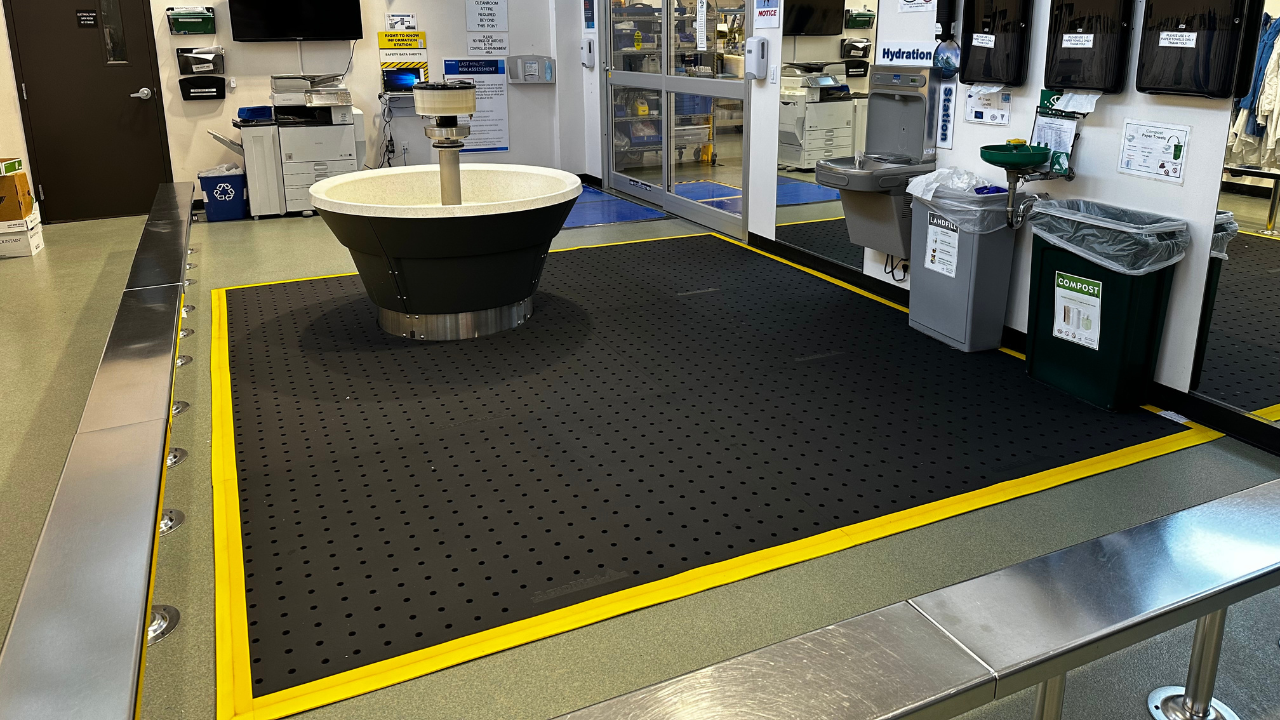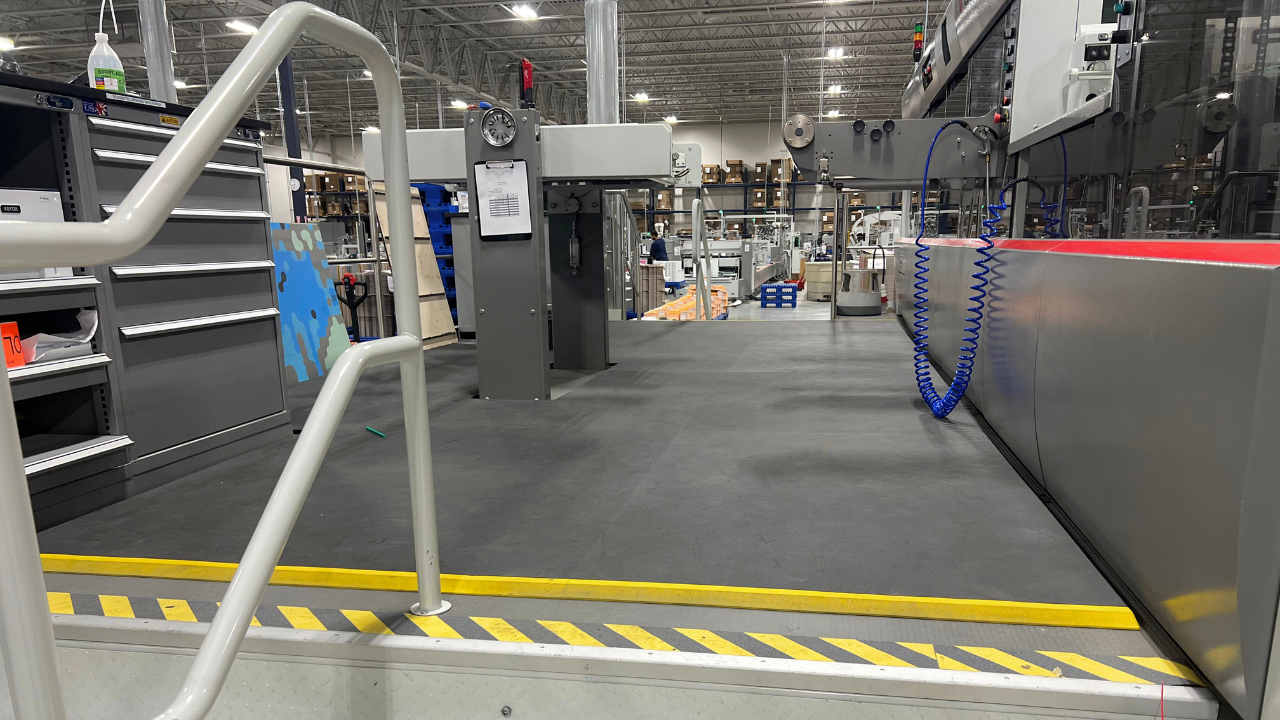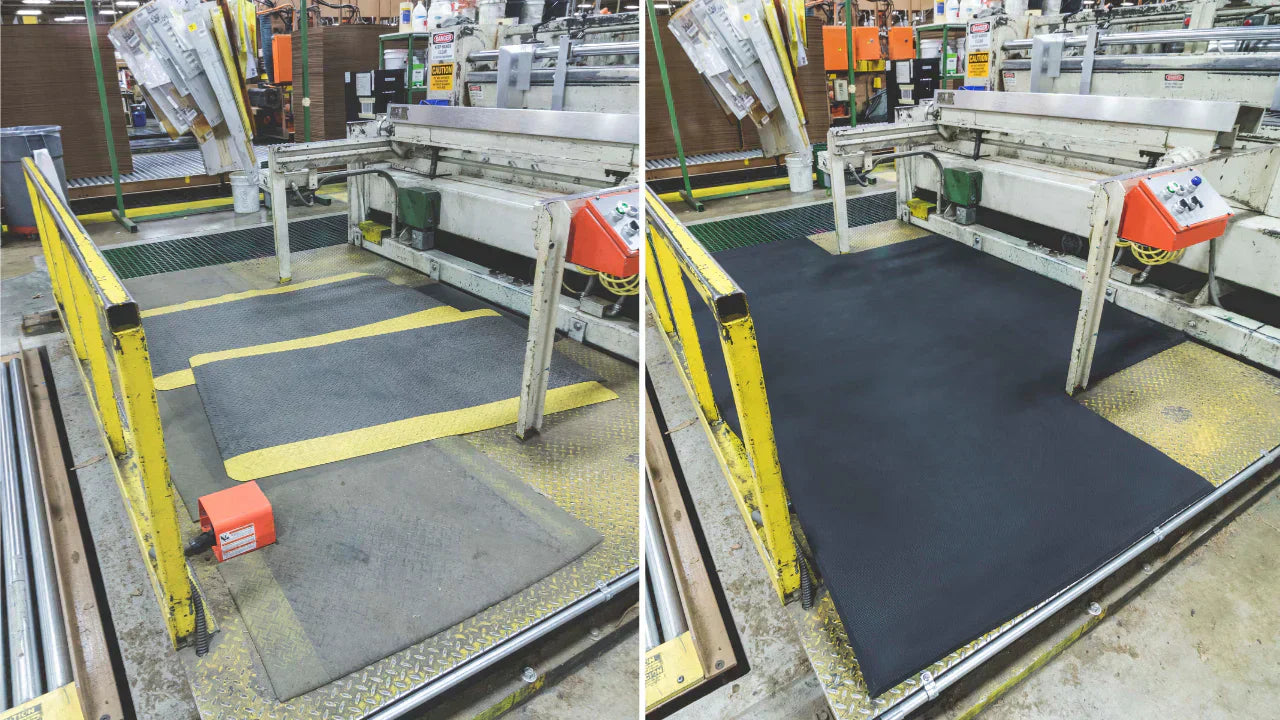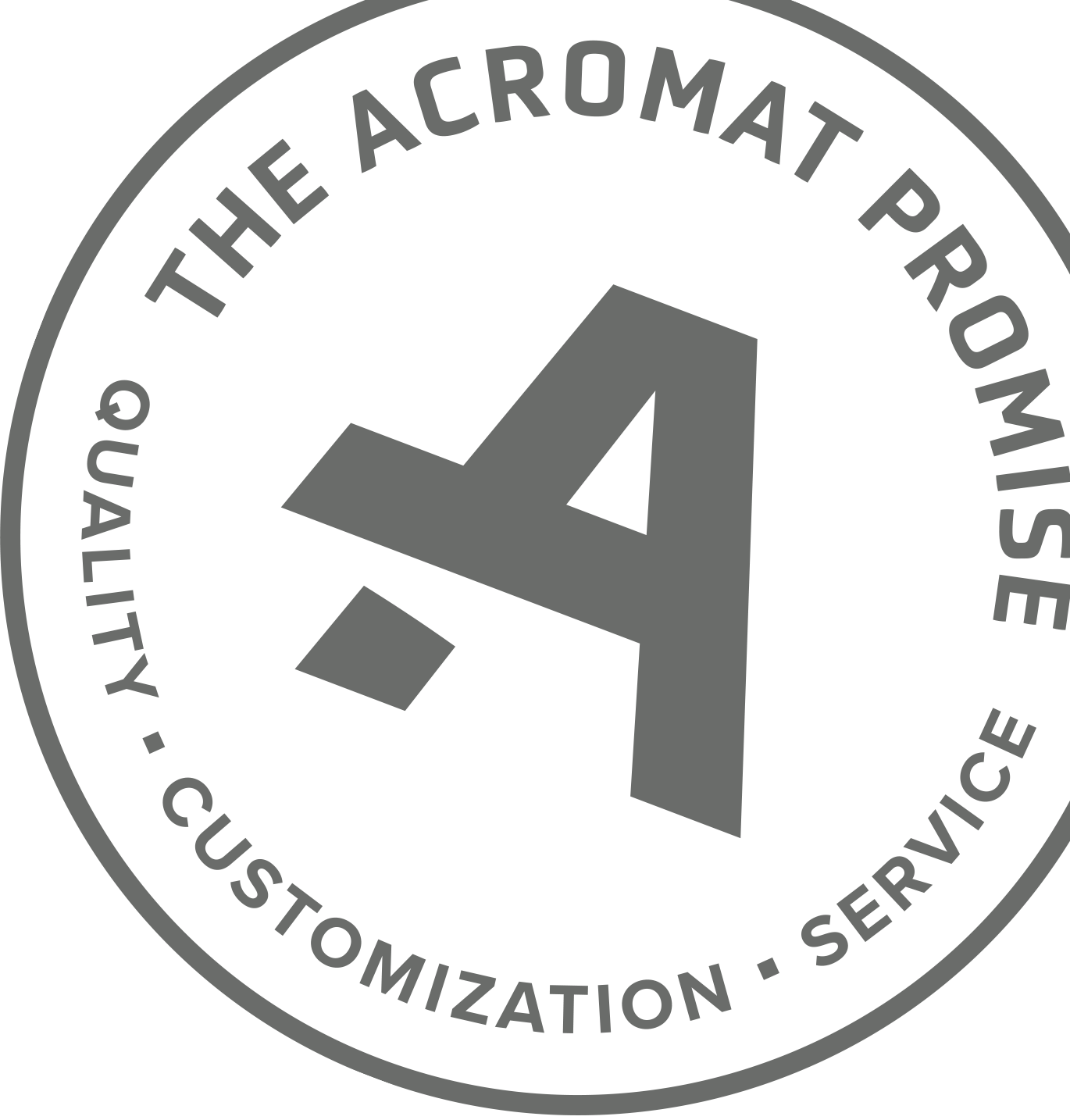Fungi, bacteria, and viruses pose a very real challenge to food processing, preparation, and packaging facilities with vulnerable products and people. Antimicrobial anti-fatigue mats play a very real role in helping you eliminate these challenges.
Limited budgets create the temptation to settle for ergo mats that are cheaper, lower quality, and non-antimicrobial as a result. The short-term cost savings can have long-term impacts. Salmonella, listeria, and E. coli outbreaks can require safety leaders to recall a product, pay high dumping costs for contaminated products and mats, shut down a production line, or worse close an entire plant.
Safety risks, lost productivity, absenteeism, and unnecessary expenses.
Here are 3 ways antimicrobial anti-fatigue mats protect your products and people.
1. Antimicrobial Mats Prevent Harmful Growth
Antimicrobial mats like the AcroMat 100-1, 100-Cleanroom, and 100-ESD Series, prevent the growth of microorganisms. The 100% nitrile these mats are made from is folded in with silver ions during production. Silver is a highly potent antimicrobial agent that has long been used to kill bacteria, fungi, and viruses. The positively charged silver ions target microorganisms that fall to the floor and accumulate on top of, around, or underneath your mats.
With a lifespan of ~8 years due to the pure nitrile material and antimicrobial qualities, the mats provide more and longer-lasting protection.
Do you have immunocompromised employees on the production floor?
Common bacteria and fungi can cause serious infection and illness. Antimicrobial safety mats prevent and eliminate the growth harmful microorganisms.
Is absenteeism a challenge for your workforce?
While serious illness is rare, bacteria and fungi can spread on non-antimicrobial mats and cause sicknesses like strep throat, tuberculosis, and UTIs. Antimicrobial mats prevent these risks.
Do you work in an environment with strict health and safety requirements?
Antimicrobial mats prevent cross-contamination. They also prevent harmful microbes and infections from being passed on.
 H-E-B: The AcroMat 100-1 Series is impervious to liquids and chemicals, meaning there is no threat of the material eroding or absorbing liquids. The mat is also 100% antimicrobial.
H-E-B: The AcroMat 100-1 Series is impervious to liquids and chemicals, meaning there is no threat of the material eroding or absorbing liquids. The mat is also 100% antimicrobial.
 Tyson Foods: AcroMat 100-1 Series antimicrobial mat with drainage holes, used on raised platforms to provide comfort and traction.
Tyson Foods: AcroMat 100-1 Series antimicrobial mat with drainage holes, used on raised platforms to provide comfort and traction.
Action Step
Do your due diligence before settling for mats that aren’t antimicrobial. Is your facility prone to potentially harmful particle accumulation? Are your products and people vulnerable to common viruses, fungi, and bacteria? Weigh the positives against the potential consequences.
2. Antimicrobial Qualities Combine with Chemical Resistance
While antimicrobial mat qualities play a key role in workforce health, safety, and productivity, they need to be combined with an imperviousness to liquids and chemicals. The AcroMat 100-1 Series, for example, is physically incapable of retaining or absorbing any liquids that splash or spill on to the mat. This prevents cracks from liquids seeping into the mat (where bacteria can take a foothold) and damage that reduces the lifespan.
Mats that aren’t chemical-resistant or impervious to liquids, like PVC, can cause more frequent buying and production disruptions.
 Before: Cracked mats in global liquor and wine distributing company. Non-antimicrobial and permeable PVC foam mats led to cracking, buildup, and reduced lifespan.
Before: Cracked mats in global liquor and wine distributing company. Non-antimicrobial and permeable PVC foam mats led to cracking, buildup, and reduced lifespan.

After: The liquor and wine distributor replaced the porous, non-antimicrobial mats with AcroMat 100-1 Series mats that are impervious to liquids and chemicals and 100% antimicrobial.
Action Step
Make sure the antimicrobial floor mats you’re considering are also chemical-resistant and liquid-proof. These features work in concert to prevent buildup, protecting the health and safety of your teams.
Beyond the unseen features, can you customize the mats you’re considering with features like drainage holes to prevent slipping in areas prone to spills, beveled edges to support cart traffic and alleviate risks from constant on/off stepping, or built-in cable covers the same height as the mat to reduce tripping risks? Can you design a unique shape to wrap around complex equipment and workspaces?
With AcroSketch, you can design your anti-fatigue mats to any shape and size in minutes, making custom as easy as buying off the shelf.
3. Proactive Cleaning Reduces Risks
Anti-fatigue mats need to be cleaned regularly. Even the highest-quality mats will break down if constantly exposed to harmful products that are left to build up over weeks and months. The mat qualities aren’t enough.
For example, YETI’s water bottles promote an antimicrobial coating that “neutralizes over 99% of bacteria.” But, if you don’t clean your bottle for a long period of time, use it to drink different liquids and expose it to different environments, temperatures, and saliva – bacteria and germs will develop. The 1% will happen if you don't take care of your products.
The same goes for antimicrobial anti-fatigue mats. They are an investment that needs to be properly cared for and cleaned to maximize use and value.
At AcroMat, the mats touched on above have a lifespan of 3-8 years. How long they last largely depends on how they are used and how well they are taken care of. The quality of the product ensures the mats serve your teams for several years. Timely care and cleaning ensures they serve them even longer.

Medtronic: This 100-1 Series AcroMat anti-fatigue mat is cleaned at the end of each day by simply mopping the top surface and being left to dry with a box fan. The surface underneath the mat is cleaned once a week as well to protect the environment and the mat.
Action Step
Clean and fully dry your mats regularly. For the AcroMat mats highlighted above, we recommend sodium hypochlorite and peracetic acid – these products sanitize the mats completely, eliminate health risks, and do not degrade them over time.
Ask your mat provider for cleaning procedures. Lower-quality mats – like mats made of PVC foam or a nitrile blend – break down quickly and may erode from certain cleaners.





